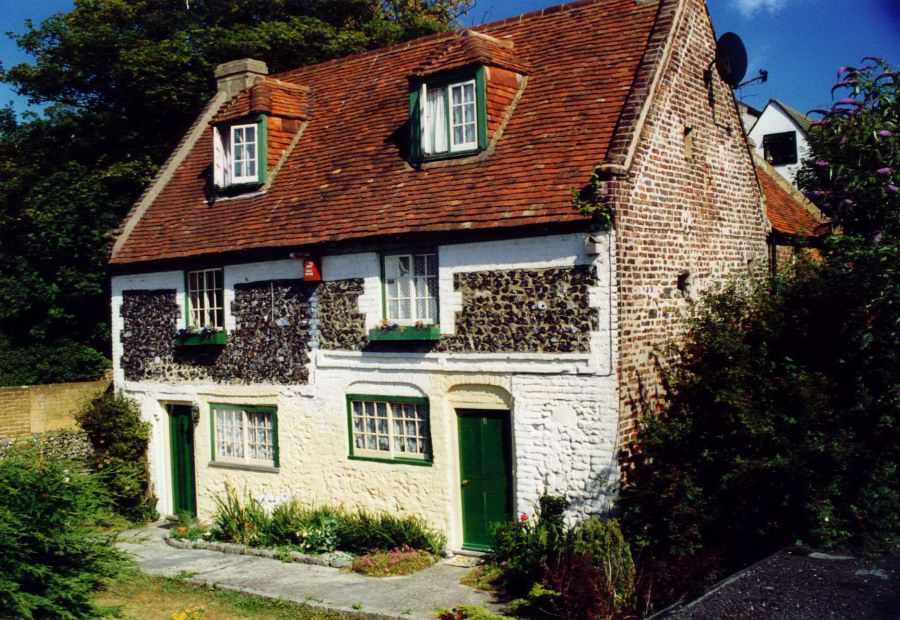Occasional Ramsgate Writings Donald G Long | Click here to buy the book or veiw our other local books When I produced this book it occurred to me that the decedents of the people named in it might want a means of communicating with each other, if you click here you can leave comments for others to see, you don't have to join anything or fill in any forms, you can even comment anonymously should you wish to.
Occasional Ramsgate Writings Donald G Long | MOUNT ALBION HOUSE, RAMSGATE | ST PAUL'S CHURCH KING STREET, RAMSGATE | HERESON SCHOOL, RAMSGATE | HERESON AND HOLLICONDANE | CHATHAM HOUSE COLLEGE 1797-1917
HERESON AND HOLLICONDANE
HERESON AND HOLLICONDANE
A Tale of Long Ago
The large and ancient parish of St Lawrence-in-Thanet had within its boundaries the Ville of Ramsgate and a number of hamlets, all of which would eventually become part of the Borough of Ramsgate. The story of how two of these hamlets became known as Hereson and Hollicondane has been passed down from father to son for many generations, and may be worth recording as folklore, although not true.
At the time of the story Hereson was quite a large hamlet, consisting of a number of dwellings, some of which remain today three hundred years on, including (although much changed) The Honeysuckle public house. Hollicondane, however, was open country, and it was not until much later that any buildings of note were recorded there. As the story begins it is important to know that when it comes to weather the Isle of Thanet appears to have a mind of its own. Records show that November can be a very bad month for strong winds and, at times, early winter snow, often very heavy.
About three hundred years ago, on the road of Our Lord the King running from Ramsgate to St Peter's, was an inn in the parish of St Lawrence called The Honey suckle. Nearby were cottages and a farmhouse in which lived a farmer, his wife and their son. Times were hard, and to help make the farm pay, this farmer, like many others in East Kent, kept a flock of sheep, no doubt for their wool as well as their meat. The sheep grazed on the hills to the north of what is now the area around St Lawrence College and part of Margate Road - well away from other crops the farmer would have been growing. Also in this area were a number of chalkpits, some of which can still be seen today; places of great danger to sheep in bad weather.
Normally the sheep were brought down to 'winter' in a specially fenced off area near the farm, but one cold November day when they were still on the hills the farmer, like many today who work the land, noted a change taking place with the weather. The clear sky was vanishing, black clouds were gathering, and darkness coming early. He knew a storm was brewing and noticed it getting colder - maybe it would even snow. It was important to bring the sheep down from the hills, so he told his son to go and bring them home. Not long after the boy had left, however, the storm broke, and it started to snow - the snow rapidly becoming heavy. In worsening weather his father decided to set out after him, and with storm lantern in hand and head bowed against the wind, he left the farmhouse. In no time there was a blizzard and the boy, with no landmarks of note to help him in the open country-side, was hopelessly lost. The farmer, struggling against the conditions, eventually

Old Cottage, Hereson (Photograph: Ken Hawkes)
came, after what seemed like an age, to a place in which he hoped to find both his son and the sheep, and he started to shout against the wind: 'I'm here, son, I'm here son!' For a long time there was no answer but at length came a reply, 'Holler again! - Holler again!' The calls were repeated, and the farmer desperately tried to locate the right spot, but in the strong wind and snow, which softens sound, his son's voice gradually got fainter and fainter, until at length it was lost altogether.
In the calm of the following day the body of the boy was found, having succumbed to the elements, and we know no more but that this sad story gave to Ramsgate the names of two of its hamlets (now swallowed up in the town) 'Hereson' and 'Hollicondane'.
The origin of this tale is unknown. In 1884 Dr Richardson's 'History of Ramsgate' noted it, as did John Huddlestone in various publications in the 1930s. Acknowledgements
Mrs Angela Band, Mr Ken Hawkes.